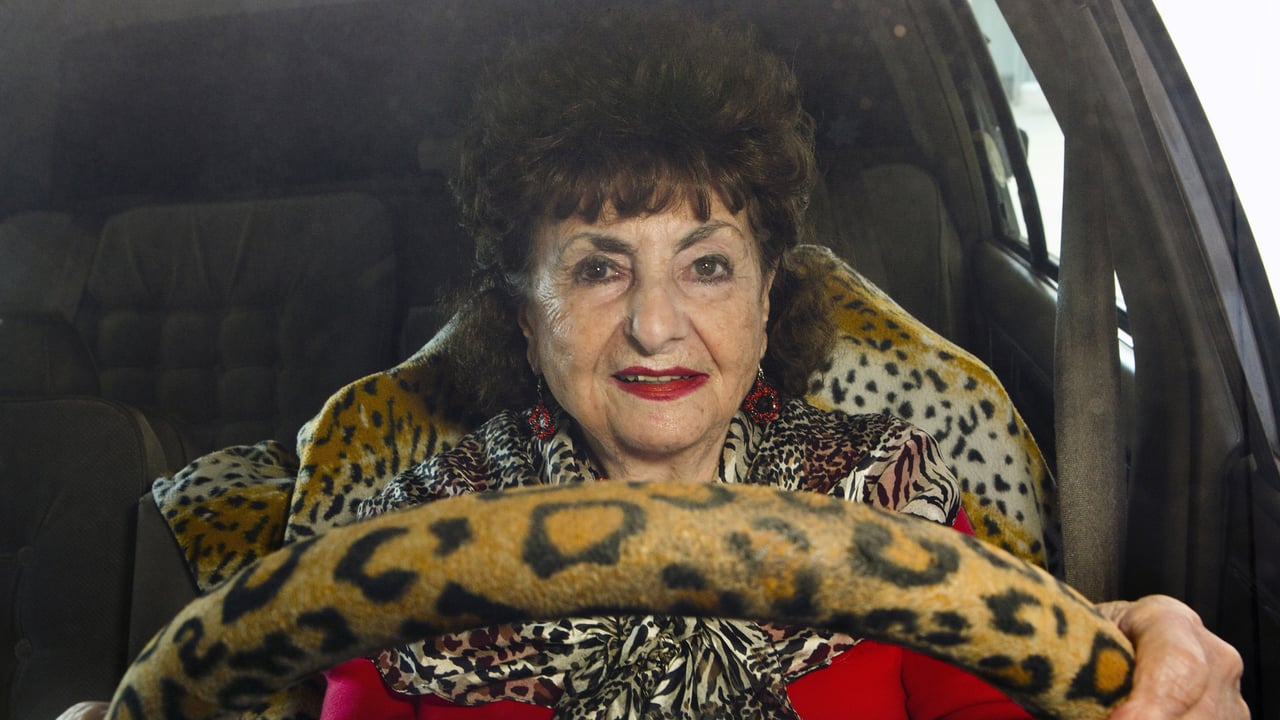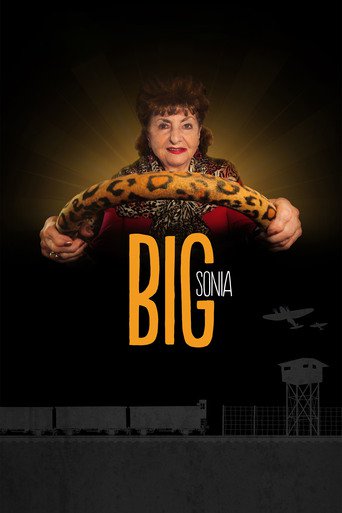

Big Sonia, winner multiple Audience and Jury awards across the country and internationally, packs such a powerful punch it will transform the way you look at the world.Husband and wife filmmaking team, Todd Soliday and Leah Warshawski, have a synergy that translates directly onto the screen.The making of Big Sonia is almost as profound as the movie itself. What began as an idea to create a colorful short about Director/Producer Leah Warshawski's 87-year-old (now 92) grandmother, a Holocaust survivor and unlikely fashion diva whose popular tailor shop was the only store still operating in a decrepit Kansas City mall.While this is certainly story enough, when they arrived to begin filming, Leah and Todd discover that Grandma Sonia isn't simply a pint size octogenarian tearing into her daily illegal parking space, thick red lipstick and highly stylized hair barely peering over the leopard-wrapped steering wheel. This woman is all that and a courageous force whose public speaking tours are changing the lives of everyone she meets, from middle school students to prisoners at the state penitentiary.Intuitively, the filmmakers expanded the short into a full-length feature, a movie that beautifully braids layers of loss and redemption with the story themes. Soliday's film editing is masterful.Every bit of the story line resonates: Sonia's eviction notice from the mall threatening to close the tailor shop; adult prisoners and public school students visibly affected by Sonia's story; a difficult history uniquely recreated with creative (and sensitive) animation by artist, Rachel Ignotofsky and Dawn Norton; the impact of Sonia's experience on the lives of her grown children; and, of course, the wild ride that is Sonia herself, from holding court at the tailor shop to sharing the remnants of her mother's scarf with shaking hands, cutting flowers and choosing her lavish outfits.Each thread strengthens the overall film, working together to create something greater than the individual parts, resulting in an experience so profound and beautiful that, by the end, you are stunned. Everything has somehow shifted, especially your worldview, and each tiny thing is now visible through a new lens. If you care about good storytelling, see this movie; prepare to be moved.
... View More"Big Sonia" is an uplifting story of resilience. In a Kansas City Star article, Eric Adler described "Big Sonia" as a story "of modern-day survival — how a tiny woman, time and again, after facing her own death and then that of her husband, is nonetheless able to reinvent herself and find hope and meaning in life." Sonia's example of shunning hate serves us all well, a universal theme for all eras, as discussed in a KC Star article by Melinda Henneberger.My favorite scene shows the reactions (to Sonia's comments) of long-term inmates in Lansing Correctional Facility. It tells you a lot about these prisoners as well as about Sonia.The film also reminds us of the "dark side" of humanity, creatively using Sonia's doodles to give glimpses of the sordid history of her six years in concentration camps. Many viewers have praised the use of drawings rather than photos or recreations.Sonia's children's comments provide valuable insights into the subtle impact of atrocities on succeeding generations.I marvel that Todd Soliday was able to edit more than 600 hours of tape into a 93-minute movie. The stuff on the cutting room floor must have been heart-wrenching to drop.When confronted with troubling occurrences in other countries, too many of us presume "that could never happen here". "Big Sonia" reminds us that we must remain vigilant and be willing to act to preserve freedom for fellow citizens, as well as ourselves.
... View MoreGreetings again from the darkness. Some people anxiously await the day they can retire and spend their days fishing or reading, while others put it off as long as possible since they find their identity through work. The diminutive subject of this terrific documentary is 91 year old Sonia Warshawski. Her reasons for maintaining a 6 day work week are both heart-warming and chilling, and make for a fascinating story.Filmmakers Todd Soliday and Leah Warshawski (Sonia's granddaughter) do their part in allowing the charming and fiery lady to deliver her own message and recount the horrors of her childhood. Sonia is a Holocaust survivor. As a 13 year old in 1939 Poland, she and her family were taken. She never again saw her father or brother, took multiple beatings while being shuffled through 3 death camps (including Auschwitz and Bergen-Belsen), and ultimately watched her mother led into the gas chamber. In her own words, she says she "was in hell", and it's "a miracle" she made it out.You might assume that anyone who has experienced so much pain would be bitter and cynical, but that's not Sonia's way. In addition to running her tailor shop for 35 years, she is also an inspirational speaker at churches, schools and prisons. We get to see her in these presentations and we are struck by how her words carry such weight with the audiences – young and old. One of the convicts provides insight when he states, "It takes people who've been through something to reach those going through something". We also witness the way she connects with teenage students something most of us have little success with.Of course, Sonia has embraced her story, but the emotions and pain are never far from her. She stays busy to keep the memories at bay, and finds the idea of retirement somewhat frightening. We meet her 3 children and hear stories of their childhood and her husband John, also a Holocaust survivor. John died from Alzheimer's complications, but he is remembered fondly by all. It's so touching to watch as Sonia shows us her mother's 75 year old scarf which she keeps under her pillow, and we are mesmerized as she recounts the incredible story of her liberation day.An NPR radio interview provides some structure throughout, but it's not necessary as we would follow Sonia wherever she leads. It's so much fun to watch her Overland Park customers greet her in the now- defunct shopping mall, and it's downright hilarious as she sports her favorite animal prints on her coat, shoes and purse and even the cover on the steering wheel that she can barely see over! Mostly this is a life lesson from a master who teaches us "don't carry hate" even though she admits to being unable to forgive. She leaves that to a higher power. She is the best example we could have for keeping history alive and spreading love and goodness.
... View MoreBig Sonia was one of those serendipitous finds that refocuses the impact of the Holocaust and its repercussions in not only Sonia's family but all those whose come into contact with Big Sonia. Recently, while feeling nostalgic about my Ohio roots, I learned about Big Sonia playing at the Cleveland Film Festival. And this is what grabbed me by the heart and shook me to the core (and I'm not prone to hyperbole):"Standing tall at 4'8′, Sonia Warshawki is a business owner of a beloved 35-year-old store facing eviction because of a dying mall. But at 91 years old, she is also – one of the last remaining Holocaust survivors in Kansas City. Sonia's enormous personality and fragile frame mask the horrors she endured at 15..."At that point, I was all in to catch the film when it made it to California and this indie-film-that-could does not disappoint. Be ready to walk away with a renewed awe of the human spirit to endure and grow and spark change.
... View More